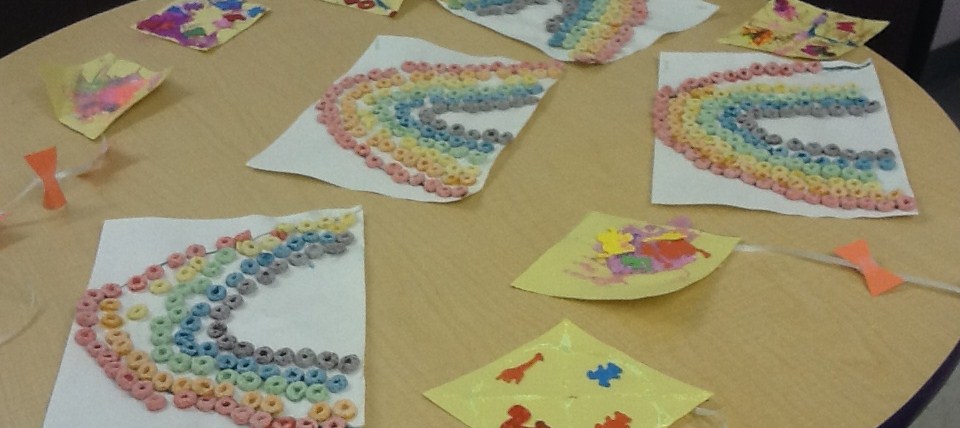Whenever we venture into the community for a field trip, I give special thought to
my approach. I end up having lots of time to chat with my staff about encouraging those teachable moments, and also have a chance to interact with both staff and students in a truly hands-on and interactive way. Going into the community provides both teachable moments for my talented teaching professionals, and also my talented early learners; both of which help generalize skills taught in the school environment.
In the past 3 weeks we have attended a Fun Fair, the Ontario Science Center, and the Royal Ontario Museum. Some were more accommodating than others (not impressed that the ROM wanted to charge us to check coats when bag check was free); the Fun Fair even discounted our rate by 50% because our group had extra needs.
All the places allowed our 1:1s to attend for free, and we only had to argue with the TTC
once about it. All in all, it was a huge success and the community was warm and receptive to each teaching moment.
The Science Center was FULL of teachable moments, the most important of which was to focus on the requirement to communicate (for example to "go this way" or "come see this", "hold my hand"); with 1:1 support, this was more than possible for our kiddies. A lot kids get in the habit of not using their words, but the more motivating the ultimate destination or tangible, the more likelihood of you getting a desired response (i.e. using your words). Because there was SO MUCH to see, we got to practice this skill over and over as we viewed each unique exhibit; we probably practiced the skill over 50 times.
How's that for repetition? GO TEAM! :)
During all of our community adventures, we practice an important social skill; we practice "
waiting nicely" over and over and over again. Waiting in line, waiting for the bus, waiting for our turn, waiting for an activity to start, waiting for friends to finish, waiting for snack/lunch; during these moments, we practice different ways of engaging ourselves and actively plan for these skills to generalize into the class and community. We often sing waiting songs to remind us what we are doing; we choose one word like "waiting" and sing it over and over to a tune we all know (head and shoulders, London bridge, and so on); I find this activity helps prevent that feeling that some of our kids get when they are unsure of exactly what is happening (I imagine it is something like....
"why aren't we moving, whats going on, I want to move...AH!"). Keeping focused on the waiting song also helps keep my little ones from getting lost in the sensory overload that could be impending at any moment when out in the community.
Out in the community there is also the opportunity to practice minding personal space, making eye-contact, receptive listening, quiet voices, calm bodies, walking feet, and using gentle hands to name but a few. Really, the list just goes on and on...there are so many opportunities to teach and generalize skills, you shouldn't have to search that hard to make skill development happen. There's also the obvious need to be reinforcing those spontaneous skills that emerge; anytime a skill happens in a new environment, that's a small victory and should be celebrated as such! Don't be afraid to throw a party, even if you are the Royal Ontario Museum.
On that note, I thought I would go into detail about some of the ways I have embarrassed myself and inspired my kids....all within the community.
1. The impromptu Hokey Pokey at the Fun Fair (some even joined in)
2. The Goodmorning Train sung while riding the TTC
3. The Hokey Pokey AGAIN on the sidewalk
4.Little Fish sung in front of the Aquarium
I may look silly, and I may bother some people, but for my kids this is just one way I support skill development and ensure that meaningful contextual learning occurs. If I sparked just one light bulb...I have done my job.
How do you support learning in the community?
Comments? Questions? I am all ears.

































